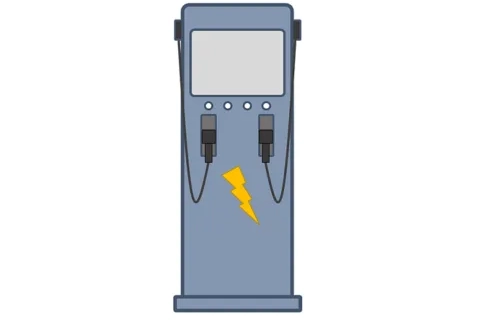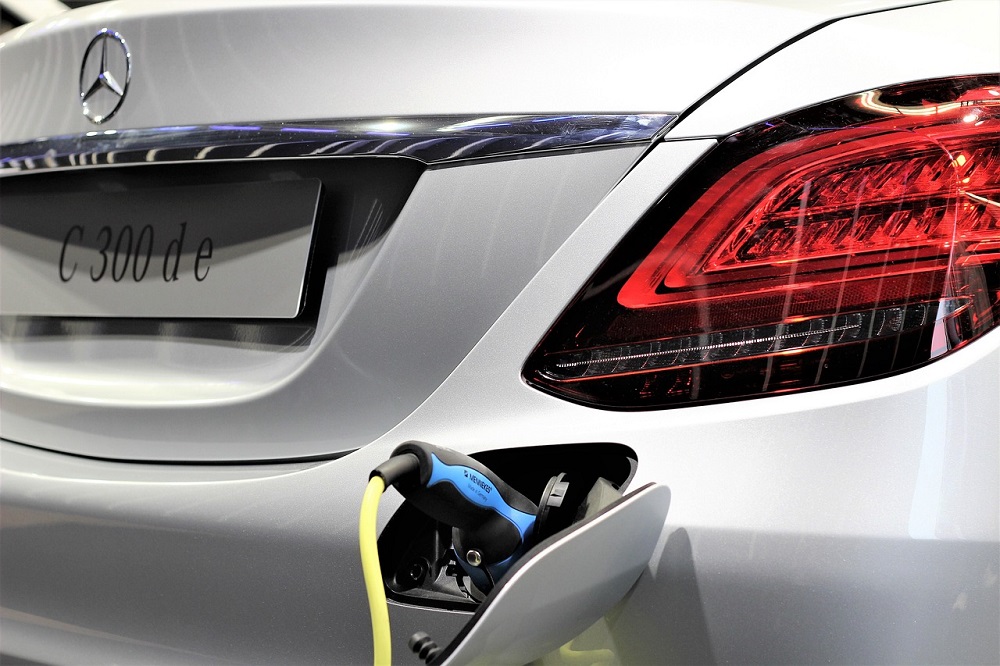6 Factors to Consider When Choosing a DC Fast Charger
A fast electric vehicle charger is a crucial facility for powering electric vehicles. To select the ideal DC quick charger, consider the electric car charger’s compatibility, safety, and efficiency.
What Are the Differences Between a DC Fast Charger and a Standard Charger?
Fast chargers for DC batteries differ significantly from AC chargers in their capability and operation.
1. Charging speed.
2. Charging principle.
3. Usage Scenarios.
DC fast chargers offer quick power injection into electric vehicle batteries, making them the go-to choice when driving long distances or needing a quick recharge. AC chargers, however, are restricted due to lower voltage/current output, which limits how quickly a change takes effect, typically taking several hours at most to finish charging one battery completely.
Second, AC chargers and fast chargers operate under different charging principles. DC fast chargers transmit DC directly into an electric vehicle’s batteries without conversion; this reduces energy losses and improves charging efficiency. In contrast, AC chargers use an alternating current, which must be adjusted according to battery voltage and current. However, this conversion process results in some degree of energy loss during the conversion process.
DC fast chargers can also be found at public and special charging stations, allowing drivers to top off their vehicles while moving quickly. AC chargers explicitly designed for daily home or office use work best with this form of fast charging.
Fast DC chargers also include additional safeguards against power outages and fault detection mechanisms to detect abnormal conditions like overly hot temperatures, abnormal voltages, or current levels that exceed what would generally be acceptable, thus interrupting charging processes as soon as necessary if needed.
How Do You Use a DC Fast Charger to Charge Your Electric Car?
1. Connect the charger.
2. Start the charging post.
3. Monitor the charging process.
4. Return Your Charging Gun for safe storage.
5. Pay Your Charge.
It is very straightforward and user-friendly to use fast DC chargers. Just ensure your EV is equipped with one, such as a CCS (Combined Charging System), CHAdeMO Connector, or Supercharge when parking up for charging. Follow these steps after parking to use fast DC charging stations:
1. Connect Your Charger
Plug the connector of a DC quick charger directly into the charging port on your electric vehicle and ensure its output reaches there.
2. Start the Charging Post
Users should switch on their charger once connected to a wall outlet. Chargers offer various methods of activation; plug-and-play versions automatically turn on when plugged into an electric socket, while regular stations require mobile applications or RFID cards to activate charging stations.
3. Monitor the Charging Process
Most commercial DC fast chargers display real-time information regarding charging status via display or app, making it possible to track charging progress by viewing this real-time information.
4. Disconnect
Once your desired charge level or scheduled charging time has been met, safely unhook and return your charger to its original spot.
5. Pay Your Charge
Remember to pay once your battery has finished charging. Depending on the chosen charging station, payment options could range from an RFID card, bank card, or mobile phone.
Are DC Quick Chargers Safe to Leave My Car Overnight?
Before leaving your electric vehicle charging overnight on a DC fast charger L3, be aware of potential safety hazards associated with long-term charging sessions using these fast chargers. While DC fast chargers offer safety features to protect against overheating or damage to their batteries, many EV manufacturers suggest against leaving an overnight charge session connected to one or two chargers instead, as this can increase overheating risks significantly and compromise battery health and safety. These recommendations apply even to overnight charges on Level 1 or 2 fast chargers.
6 Factors to Consider When Choosing a DC Fast Charger
1. Power.
2. Connector compatibility.
3. Network Connectivity.
4. Payment Methods.
5. User authentication.
1. Power
Chargers come with various power levels, usually expressed in Kilowatts. Examples are 50 kW DC fast chargers and 150 kW DC fast chargers. Their prices often depend on this variable, although one must watch for potential scams attempting to sell low-power 50 kW chargers at high costs.
2. Connector Compatibility
Verify the DC fast charger you purchase is compatible with your electric vehicle’s charging port. CCS, CHAdeMO, and Tesla Supercharger connectors are standard DC fast charger connectors.
3. Network Connectivity
WI-Fi, Bluetooth, Ethernet, and 4G networks are the most commonly employed for connecting electric car chargers to networks.
Bluetooth allows charging control and monitoring, while Ethernet provides fast, stable data transfer rates.
Some EV chargers feature wireless communication modules like 4G/5G that enable them to directly access mobile networks without depending on Wi-Fi or Bluetooth connections. With such connections, chargers can communicate directly with the Internet rather than through intermediary means like Wi-Fi and Bluetooth connections.
4. Payment Methods
The payment methods of EV chargers are mainly classified into contactless and contactless. The contactless payment provides excellent convenience for users with its feature of not needing to touch the charging device directly. Such as RFID cards, charging applications, or mobile payment platforms. Users can complete the payment process by placing the RFID card close to the charging device’s sensor area or using a mobile phone to scan the QR code. In contrast, contact payments require direct physical contact between the user and the charging device, such as inserting a credit card or cash.
When choosing a payment method for your charger, choose one based on your payment habits. If you are a charging station operator, you need to consider the payment habits and acceptance of your customers and choose a payment method that covers the needs of most users.
5. User authentication
There are various user authentication methods for EV chargers, the most common of which are Plug & Charge, RFID, and QR codes.
- Plug & Charge:
Plug and Charge is popular among users for its simplicity and speed. Users can insert the charging plug into the charging port and start charging without any additional authentication steps. This method is suitable for public charging stations and other scenarios.
- RFID
RFID (Radio-Frequency Identification) is based on radio frequency identification technology. Users need to carry a card or tag with an RFID chip and bring it close to the card reader of the charging device, and the system can read the card information, verify the user’s identity, and authorize charging. This approach suits scenarios requiring high security and authentication, such as corporate fleet management or using specific user groups.
- QR Code
The authentication method utilizes QR code technology. The user scans a QR code (Quick Response Code) containing specific information on the charging device and completes the authentication through the charging application on the smartphone. The system reads the QR code information, verifies the user’s identity, and authorizes charging. This method is simple and suitable for temporary or visitor-use scenarios, such as public charging stations or car parks.
6. Functionality
Consumers prefer multi-function smart EV chargers due to the continuous advancements being made by these chargers, which offer real-time monitoring, a user-friendly interface, and efficient charging capability.
Conclusion
When selecting a DC quick charger, multiple factors must be considered for maximum compatibility, safety, and efficiency. These considerations include power output compatibility and network connectivity options like payment plans or user authentication features. These all contribute toward finding an EV driver with the charger best suited to their specific needs and usage scenarios.





Leave a Reply
Want to join the discussion?Feel free to contribute!